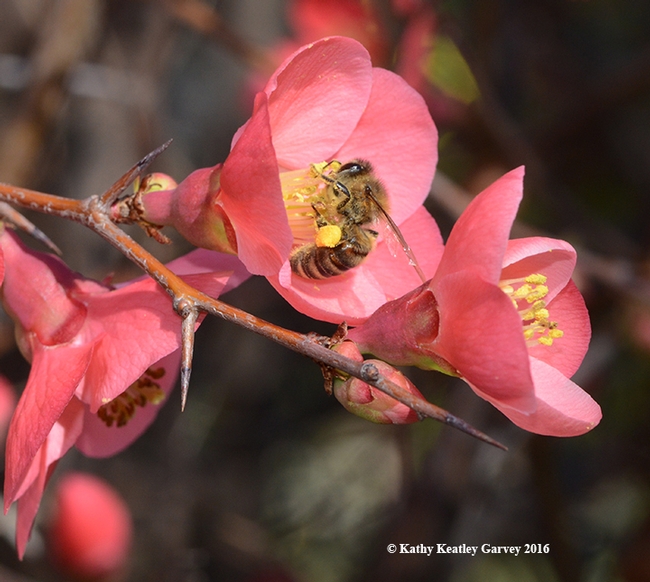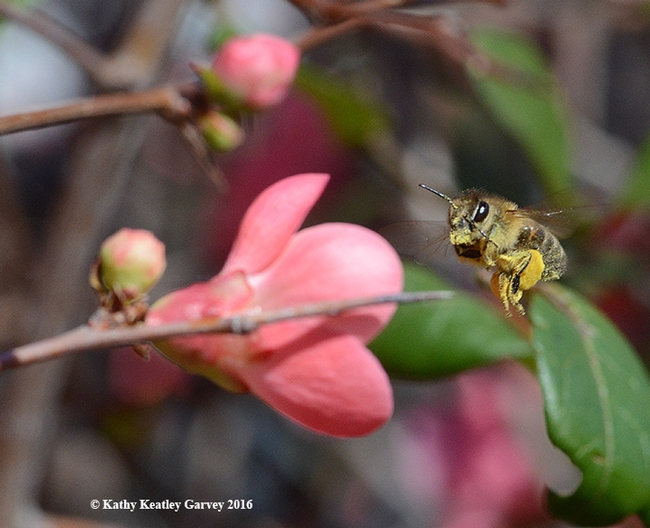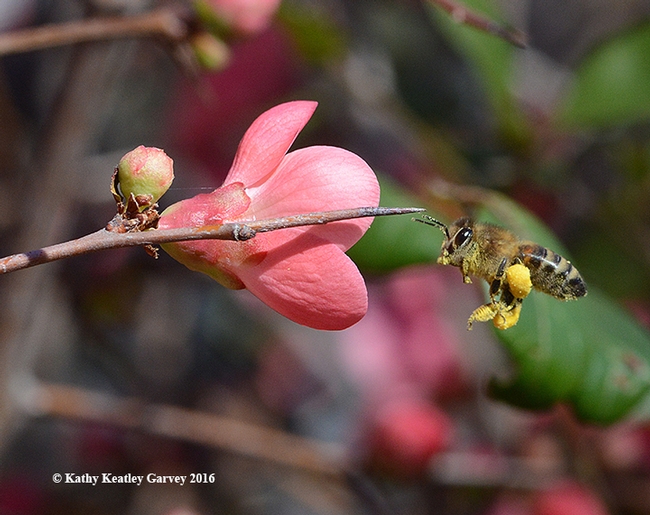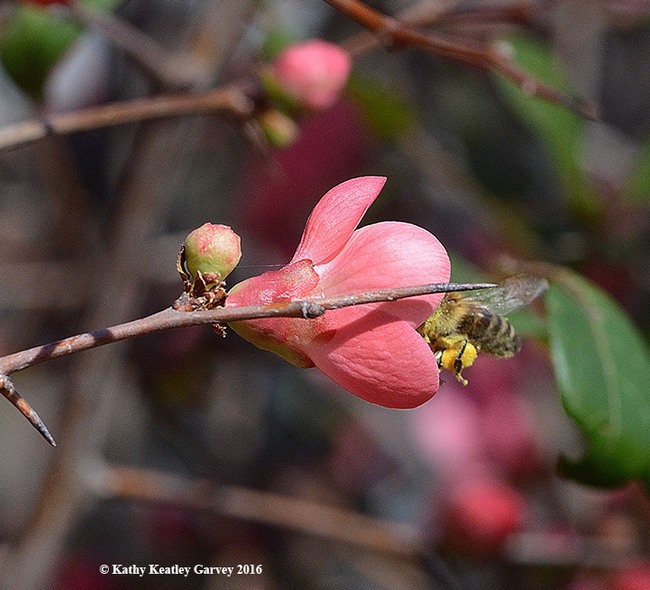Bee my valentine.
There's something about a honey bee foraging on a flowering quince that makes you long for Valentine's Day and the end of winter.
Flowering quince (Chaenomeles sp.) is one of the first flowers of the year to bloom. And bloom it does, in between the rain drops and rays of sunshine.
It's a delight to see the honey bees buzzing in and out of the delicate pink flowers as they tightly pack their yellow pollen for the trip back to their colony. Protein for the bees.
They're the real winged cupids of Valentine's Day, not the baby with the bow and arrow.
Wikipedia says of Valentine's Day: "The day was first associated with romantic love in the circle of Geoffrey Chaucer in the High Middle Ages, when the tradition of courtly love flourished. In 18th-century England, it evolved into an occasion in which lovers expressed their love for each other by presenting flowers, offering confectionery, and sending greeting cards (known as valentines). In Europe, Saint Valentine's Keys are given to lovers 'as a romantic symbol and an invitation to unlock the giver's heart,' as well as to children, in order to ward off epilepsy (called Saint Valentine's Malady).Valentine's Day symbols that are used today include the heart-shaped outline, doves, and the figure of the winged cupid. Since the 19th century, handwritten valentines have given way to mass-produced greeting cards."
Remember those traditional Valentine's Day cards?
Roses are red
Violets are blue
Sugar is sweet
And so are you.
Me thinks that "pink" and "flowering quince" and "yellow pollen" and "honey" should have been in there somewhere...
Attached Images:

Honey bee foraging on flowering quince. (Photo by Kathy Keatley Garvey)

Full speed ahead--A pollen-laden honey bee heads for another quince blossom. (Photo by Kathy Keatley Garvey)

Honey bee adjusting her load. (Photo by Kathy Keatley Garvey)

The entrance: a honey bee enters a quince blossom. (Photo by Kathy Keatley Garvey)